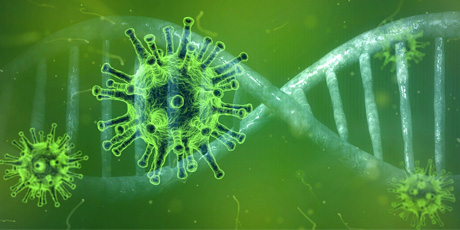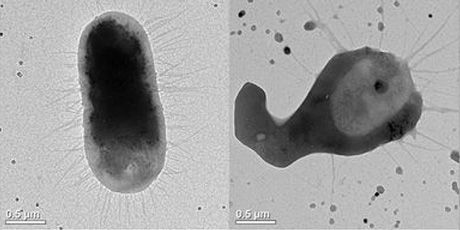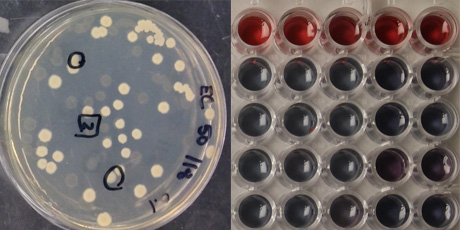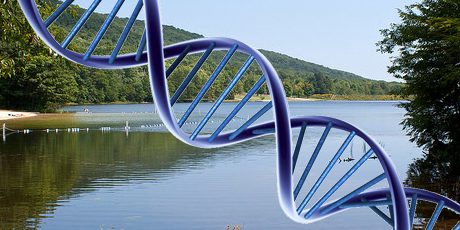Funding entity/Industrial partner: National Science Foundation rapid response grant, and University of Minnesota rapid response grant
- Date :2020-2021
- Number of projects in this area:3
- Features: Technoloogy available for commercialization (US Patent Pending)
Rapid Detection of Coronaviruses for COVID-19 Diagnostics
The Abbas Research Laboratory has 3 ongoing projects related to SARS-COV2 detection and COVID-19 diagnostics:
1- A novel kit for rapid extraction and concentration of SARS-COV-2 RNA.
2-One-step rapid detection technology for COVID-19 diagnostics
3- Antiviral coating of medical masks
for the inactivation of coronaviruses
Project in the News
Stay tuned...
Funding entity/Industrial partner: National Science Foundation
- Date :2016-2019
- Number of projects in this area: 3
- Features: Technoloogy available for commercialization (US Patent Pending)
Rapid Microbial Detection of Antibiotic-Resistant Microorganisms
Microbial resistance to antibiotics is one of the major global challenges in healthcare today. methicillin-resistant Staphylococcus aureus (MRSA) bacteria alone cause more than 11,000 deaths in the U.S. every year.
Project in the News
Press release: “Researchers use green gold to rapidly detect and identify harmful bacteria”, Phys.Org, July 31, 2018. Read more..
Funding entity/Industrial partner: Schwan's Food Company, USDA, MnDRIVE Global Food Venture, General Mills,
- Date :2014-2023
- Number of projects in this area: 2
- Features: Technoloogy available for commercialization (US Patent Pending)
Rapid Microbial Detection of Foodborne Pathogens
According to the Centers for Disease Control and Prevention (CDC), each year roughly 48 million people (1 in 6 Americans) get sick, 128,000 are hospitalized, and 3,000 die of foodborne diseases. A 2010 report of the Pew Charitable Trusts estimates that foodborne diseases cost the U.S. roughly $152 billion per year in medical bills and lost workdays. Early and rapid detection of microbial food spoilage would have broad and deep impact on healthcare and the food industry. In one hand, it can prevent food poisoning and enhance food safety, and in the other hand reduce food loss by allowing early intervention to delay deterioration.
Project in the News
Press release: “Researchers use green gold to rapidly detect and identify harmful bacteria”, Phys.Org, July 31, 2018. Read more..
Funding entity/Partner:
LCCMR, Minnesota Invasive Teresterial Plants and Pest Species Center
- Date : 2015-2022
- Features :
Early Diagnostics of Oak Wilt
The purpose of this project is to develop a new assay technology for rapid and early detection of the invasive fungus Ceratocystis fagacearum, causal organism of oak wilt. Early diagnosis of infected trees will help stop the spread of the disease and minimize the inherent cost for municipalities, counties, private property owners and the State. A study on Minnesota oak trees published in 2011 revealed that 76–266 thousand trees will be infected by the oak wilt fungus during the period 2007–2016, with discounted tree removal cost of $18–60 million ($400-500 per tree). Preventing spread of the disease requires early detection of the causal fungal agent with affordable diagnostic tools. However current methods used for diagnosis rely on either fungal isolation from symptomatic tissue or DNA amplification from sapwood. Both methods have significant limitations. In addition to the cost for the assay ($59/sample), the standard fungal isolation method requires 1-2 weeks for growth of the pathogen on an agar medium, is unreliable during the dormant season of the host, and performs poorly on tissues that have been colonized by other microorganisms. These limitations present challenges for tree care companies, land managers and others who remove infected trees during the winter. Although, PCR-based tests provide a better sensitivity, their high cost ($120/sample) and labor-intensive protocols limit their use to problematic samples or dead tissue.
Project in the News
TV news broadcast: Jeff Edmondson, “New tech may speed up Oak wilt detection”, KARE11, November 14, 2017. Link to the interview. Read more...





